- Home
- Astrid Lindgren
Astrid Lindgren: The Woman Behind Pippi Longstocking Page 3
Astrid Lindgren: The Woman Behind Pippi Longstocking Read online
Page 3
Both Samuel August and Hanna were agreed on one demand, however, which was not up for discussion: the four children had to help on the farm and in the fields. All year round, often before they left for school in Vimmerby and even on the day of their confirmation, they were expected to dig up beets before washing and getting changed. A parallel to this firm working partnership between children and adults, and to the pedagogical view of work as ennobling, can be found in Astrid’s novel Kerstin and I, about the twins Kerstin and Barbro. The reader is presented with a couple whose marriage is reminiscent in various ways of the solidarity between Hanna and Samuel August. The hardworking, capable, and ubiquitous mother figure in the book, which was published in the fall of 1945, at the same time as the first Pippi Longstocking title, is described as the family’s commander in chief, with a broad overview of its goings-on and an unrelenting eye for practical detail. The father, on the other hand, is an impractical daydreamer whose familial strengths lie in his idolization of his wife and children. As he says of his relationship with his twin daughters: “I’m the kind of unfortunate parent who never strikes his children except in self-defense.”
At the beginning of the book, this gentle man among three strong women has just retired from the military, where he was a major, and has persuaded his wife and daughters to abandon life in the big city and settle down in the country on the family farm, Lillhamra, which has been empty for years and thus needs a loving hand. It proves to be a tremendous slog for the whole family, and again and again the mother has to emphasize to her two tomboy daughters, Kerstin and Barbro, that farm work isn’t merely necessary for the community but also builds character. Her pragmatic philosophy of life can be summed up in two basic messages, which the Ericsson children were also taught at Näs during the years between 1910 and 1920: “You have to renounce that which is less necessary to achieve that which is necessary” and “Only those who work and learn to love work can ever be happy.”
Vimmerby, August 1909. Samuel August, Hanna, and their two eldest children, Astrid and Gunnar, on a visit with relatives. As in many later photographs, Astrid has sought out her father’s embrace.
Astrid Ericsson carried these doctrines about privation and working till you drop into adult life, by which time they were ingrained. Her daughter Karin Nyman relates that in the 1930s and during the war her mother had a knack for the difficult art of getting the most out of the family’s modest means, including by working twice as hard, something she continued to do for many years after the war, and indeed throughout most of her life, according to her daughter, in her own remarkably effortless way: “It was my mother’s natural tendency to beaver steadily away without stress or fuss; to move easily between different tasks, answering letters and supervising things and doing housework; making beds, clearing the table after breakfast, washing up after dinner, all as automatically as she brushed her teeth, all quickly and efficiently.”
The necessity of sacrifice and hard work were such obvious virtues for Astrid Lindgren that she never impressed them on her children in the form of admonishments or commands. On the other hand, Karin Nyman recalls, their mother always found strength in thinking of Hanna’s advice to her children when work got to be too much and too dull, and they were looking forward to getting to school: “‘Just set to, just keep at it,’ said Hanna, when they were in the middle of some protracted and monotonous task like thinning beets or bundling hay. And as an adult Astrid unconsciously made the gesture she had made as a child when she tightened the bundle—as if taking a run-up to something demanding.”
Girls with Pens
In May 1923, fifteen-year-old Astrid Ericsson’s school career came to an end. She wasn’t sorry, because although she had done well in her studies, choosing in the final Swedish exam to write on a conspicuously virtuous topic—“Klosterfolkets verksamhet under medeltiden,” activities of convent inhabitants during the Middle Ages—she often felt like the more tomboyish of the twins in Kerstin and I: “I got pins and needles all over my body, and I felt like screaming and flailing around wildly. Best of all I liked running about and keeping busy.”
She was hardly the school troublemaker, but she did get the fidgets. You can see it in old photographs of the classroom, where all the children are sitting nice and calm and gazing at the photographer. All except for Astrid, who’s standing up and fluttering one arm. She was small and slim, lithe, with braids rather than short hair. As one of the slightly older girls in Vimmerby—Greta Fahlstedt—recalled in the Vimmerby Tidning on the occasion of Lindgren’s ninetieth birthday in 1997: “She was so lively even in those days. She practically gave off sparks.” And she got nothing but excellent grades in her final exams in 1923, when she was leaving lower secondary education. Among her papers in Swedish, German, and English, the Swedish one about busy medieval nuns was especially revealing of the fifteen-year-old writer’s well-developed imagination—and sense of humor: “One thing nuns spent a lot of time on was needlework. They embroidered elaborate altar cloths, made lace, sewed clothes and much more. They were unbelievably talented, and I think if nuns had been allowed to marry, which wasn’t the case, they would have had magnificent trousseaus.”
We know nothing of the parental discussions conducted across the bedroom in 1923–24, as Hanna and Samuel August lay in their separate beds and talked in low voices about their eldest daughter’s future—or her clothing—before singing a psalm and blowing out the candle. On the whole there is little in Astrid Lindgren’s autobiographical writings about her childhood paradise at Näs that reveals or hints at what Hanna and Samuel August thought and did about their offspring’s potentially questionable decisions.
We don’t know, for instance, whether Hanna supported her fifteen-going-on-sixteen-year-old daughter’s aspirations to become a trainee journalist at the Vimmerby Tidning when the opportunity arose. And what was Samuel August’s stance on the matter? Had he already come to an agreement with the newspaper’s editor in chief? If so, then it can’t have been without a degree of concern and opposition from Hanna. Female journalists were a rarity, and the newspaper was a male-dominated world, still far from reflecting the democratic breakthrough in women’s rights that Sweden was undergoing around 1920. Still, we can’t assume that Hanna—inwardly, at least—didn’t support her daughter’s wish to develop her talent for writing, to indulge the same urge to inhabit the world of words that she herself had once felt. In Samuel August from Sevedstorp and Hanna from Hult, Astrid Lindgren describes her mother’s dreams of using and developing her considerable reading and writing skills as a young, unmarried woman: “She was a gifted girl who was awarded perfect grades in all subjects without exception when she left school. Once she had hoped to become a teacher, but her mother was against it. Did she feel that she would be irretrievably giving something up by getting married?”
Hanna probably felt uneasy, yet at the same time rather proud of her talented daughter’s employment at the town’s leading newspaper. It was unusual for women, especially women as young as Astrid, to be allowed to publish their writing in such a forum and thereby help shape the flow of news. Since the Modern Breakthrough in the 1870s—a shift in Swedish literary culture from romanticism to naturalism—there had been female journalists in Scandinavia, but not many, and in 1920s Sweden recruitment continued to be slow. This was despite Elin Wägner’s novel The Pen, published in 1910, which had significantly heightened interest in new, intellectual working environments for women. Quick-witted, spirited Barbro, the main character in Wägner’s novel, was intended not just to personify the modern independent woman but also to shed light on a new and vital female type: the opinion maker. Nicknamed “pens,” these women brought to the fore a discussion about female voices and roles outside the home. In this sense, Wägner predicted, in The Pen as well as in her 1908 debut novel The Norrtull League, the coming exodus from the country to the city by young women like Astrid Lindgren. As Wägner wrote: “Just wait until independent women truly begin creating homes for them
selves all over Stockholm: There will be so many small powerhouses, and the world will marvel at what we can achieve.”
In Sweden in the 1920s it wasn’t necessary for journalists to have attended an institution of higher education. The newspaper itself trained its staff, and the basic view among contemporary writers was that you were either born to do the job or you weren’t. As in Astrid Ericsson’s case, talent (along with good connections) was a springboard to employment as a trainee. The training itself was highly individual, varying from paper to paper, which meant that the probationary period could last from a few months to a few years.
The decision to give Astrid Lindgren a job at the Vimmerby Tidning at such a young age was made by the editor in chief and owner of the paper, Reinhold Blomberg (1877–1947). He had become aware of the young girl’s remarkable talent for writing several years earlier. Astrid attended Vimmerby Samskola Secondary School with some of Blomberg’s children. One day in August or September 1921 the editor in chief received a visit at his office in Storgatan from Mr. Tengström, who taught Swedish, German, and English at the school. The teacher wanted to show him an exceptional essay written by Astrid Ericsson, then just thirteen. Would the paper be interested in printing it? It began with the words: “It’s a beautiful August morning. The sun has just risen, and the asters growing in a bed in the middle of the yard are beginning to raise their dew-laden heads. It’s so silent, so silent in the yard. There’s not a person to be seen. No, wait: Here come two little girls, chatting eagerly to one other.”
Although Blomberg was neither a journalist nor an author, he could hear the difference between good and bad storytelling. It was a necessary skill in those days, when newspapers were transforming themselves from old-fashioned party-political publications to modern, general-interest broadsheets that addressed the whole family and were expected to sell on more than just advertisements, announcements, partisan opinion, and moralistic screeds. The readers of the future had to be kept informed and entertained. As a businessman, Blomberg understood that.
“On Our Farm,” as Astrid Ericsson’s school essay was called, was printed in the Vimmerby Tidning on September 7, 1921. The text, which was presented to the readers as “a demonstration by one of our young, exceptionally stylistically gifted people,” had everything one might want from an entertaining piece of journalism in a modern paper: a scene set in the first sentence, vivid and memorable characters, and language that fizzes with energy and feeling. Moreover, the essay is about something universal, something adult readers of both sexes and all ages can identify with and miss, something that became one of Astrid Lindgren’s authorial hallmarks later in life: children playing freely.
Almost all children’s play in rural areas around 1920 took place outdoors, arising from a close relationship between people, animals, and nature. When the Ericsson children weren’t helping in the fields, their childhood was so full of games that—as Astrid often repeated—they almost played themselves to death. As she wrote in a nostalgic passage in the book Fyra syskon berätter (Four siblings speak): “Games, yes, which filled our days! What would my childhood have been without them? What, for that matter, would any childhood be if play weren’t a part of it?”
Four playmates at Näs, armed with a trowel, spade, and barrow. From left: Gunnar, Astrid, the cowman’s daughter Edit, who read unforgettable stories to Gunnar and Astrid, and a grandchild of the priest who lived next door.
The school essay printed in the Vimmerby Tidning in 1921 centered around the intense world of play, which was coming to an end for the thirteen-year-old writer. The reader meets two girls who are busily preparing to give a dead rat a solemn funeral. With great seriousness and dignity, the animal and its long, thick tail are wrapped up in a dainty white handkerchief and laid carefully in the ground, before being commended to God: “The little children stood grave and silent, Maja even squeezing out a tear for decency’s sake. Then the sun smiled, and the asters bowed whisperingly toward each other. Or maybe it was just the wind bending their heads together.”
After the rat is buried, there’s no wake or coffee in the living room. Instead, a group of children gather in the twilight to play more games, but for once they can’t decide what game to play. Increasingly tired and having had enough for one day, they eventually end up going their separate ways. Yet the piece ends on an upbeat note. Tomorrow will bring a new day with new games: “Good night, scallywags!”
Physics for Journalists
Blomberg forgot neither the essay nor the writer. He may also have been presented with other evidence of young Astrid Ericsson’s skill, as his older children occasionally were when Mr. Tengström read out one of her essays in class. Previously unknown and unpublished exercise books from those days testify to the impressive scope of her talent. Five different Swedish essays from 1921, apart from the published “On Our Farm” and the paper on nuns from 1923, reveal a prodigiously expert storyteller, well aware of her linguistic toolkit, of genres and styles, and possessed of a sophisticated command of tone.
“The rest of us wrote so conventionally,” remarked ninety-year-old Greta Rundqvist in the Vimmerby Tidning in 1997. “Even at school, Astrid’s essays were in a class of their own, and were often read aloud by the teacher, who recognized her talent.” Whether she was recounting a solitary walk from Vimmerby to Krön, describing Christmas Eve at Näs, telling tall tales about a local traveler to America, or reporting on an exciting experiment in physics class, she knew how to make every single text lively and relevant for her reader. A striking example is the essay “An Electrical Experiment” from December 1921, in which fourteen-year-old Astrid, tasked with writing a physics report, chose to approach it journalistically. Using the narrative devices of a newspaper article and larding the report with direct speech, she manages to interest even unqualified readers in physics:
“Now, we’re going to do an experiment,” said Miss H. She fetched six glass bottles with metal rods inside. “What is this?” she asked. Deep silence. “This is an electroscope. I’m going to tell you what they’re made of. So, there’s a glass bottle with an ebonite stopper. Through the stopper, a metal rod runs down into the bottle. At the top of the metal rod is a shiny ball of foil, and at the end of the rod are two gold leaves. Today we’ll be looking at electroscopes,” Miss H. concluded her presentation. We were split up into groups, each of which was given an electroscope and an ebonite rod. “What shall we use the ebonite rod for?” we cried. “To charge the electroscope,” answered Miss H. “How are we supposed to do that?” “Well, I’ll tell you, if I can get a word in edgeways, but the way you’re chattering it’s nearly impossible. Now, you already know that a thing can become electrically charged if you rub it. So you’re going to rub your ebonite rods with a woolen cloth. Afterward you’re going to touch it to the foil ball on the electroscope, put your finger on the ball, take it away again, then remove the ebonite rod. Now, look, the gold leaves that used to be close together have spread out. Can anyone tell me why that happens?” “I know,” cried one of the girls. “There are two kinds of electricity, negative and positive. The gold leaves have been charged with the same kind, so they push each other away, because two charges with the same sign repel each other, while those with different signs attract each other.” “That’s absolutely right,” said Miss H.
Just over a year after she received her lower-secondary-school exam results in the summer of 1923, Astrid Ericsson was taken on by the Vimmerby Tidning as an apprentice journalist. A monthly wage of sixty kronor was the going rate in contemporary Sweden for trainees, who were expected not only to write burial notices, small articles, and reviews, but also to answer the phones, keep records, proofread, and run errands in town.
The Vimmerby Tidning appeared twice a week and consisted of eight pages in tabloid format, sprinkled with advertisements and public announcements and featuring a wide and disparate range of news from at home and abroad: from international politics and natural disasters to short paragraphs about yet anoth
er unmarried mother somewhere in Sweden being accused of having suffocated or drowned her newborn. In more cheerful corners of the newspaper, readers could find articles about sports, fashion, and household management, as well as the occasional crossword and the ever-popular column “Here and There,” which contained brief, sensational news items about crimes, accidents, and peculiar incidents all around the country. These curious tales, drawn from real life, provided excellent fodder for an imaginative, story-loving trainee journalist when the opportunity arose to practice her writing. You could read, for instance, about an elderly man in Hultsfred who, in the spring of 1925, was about to give a speech over his friend’s coffin, which had just been lowered into the earth, when he suddenly keeled over dead himself. In an equally sensational funeral story from Mulseryd, a woman who’d been mute for twenty-two years began talking loudly to people in church at her mother’s burial service.
A copy of the Vimmerby Tidning cost ten öre, and if you wanted an annual subscription you had to hand over four kronor. The daily circulation was stable at around five thousand copies, and although Reinhold Blomberg didn’t have a monopoly on news in the town, the competing Nya Posten was only half as big and could match neither the quantity of advertising, the supply of informative and entertaining journalism, nor the number of staff and contributors based in small rural communities around Vimmerby.
Since almost all the articles in the paper were unsigned, it’s impossible to say exactly what the budding journalist contributed during the more than two years she was employed at the “Vimmerby Rag,” as Astrid nicknamed the paper in letters to her older brother Gunnar, an agricultural apprentice in Skåne during those years. It is clear from Reinhold Blomberg’s warm letter of recommendation in August 1926, however, when her employment was abruptly terminated, that she was a talented, alert, and unusually hardworking trainee who contributed to various departments of the paper over the years. The letter reveals that she carried out all kinds of administrative and editorial work, and never failed to pitch in when needed—always with “good humor and a willingness that has been remarkable,” the editor in chief emphasized.

 A World Gone Mad: The Wartime Diaries
A World Gone Mad: The Wartime Diaries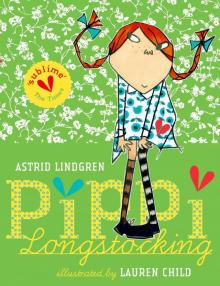 Pippi Longstocking
Pippi Longstocking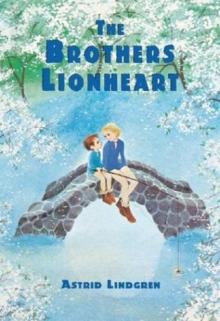 The Brothers Lionheart
The Brothers Lionheart Mio, My Son
Mio, My Son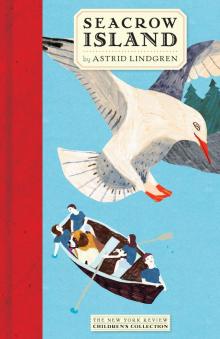 Seacrow Island
Seacrow Island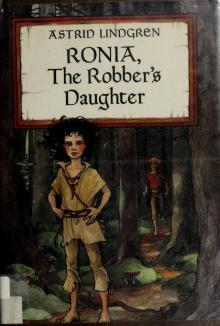 Ronia, The Robber's Daughter
Ronia, The Robber's Daughter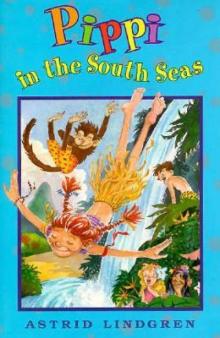 Pippi in the South Seas
Pippi in the South Seas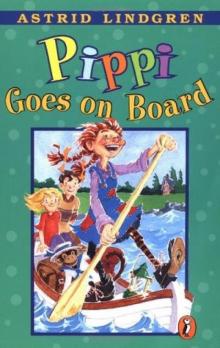 Pippi Goes on Board
Pippi Goes on Board Astrid Lindgren, illustrated by Ilon Wikland, translated from the Swedish by Jill Morgan
Astrid Lindgren, illustrated by Ilon Wikland, translated from the Swedish by Jill Morgan War Diaries, 1939-1945
War Diaries, 1939-1945